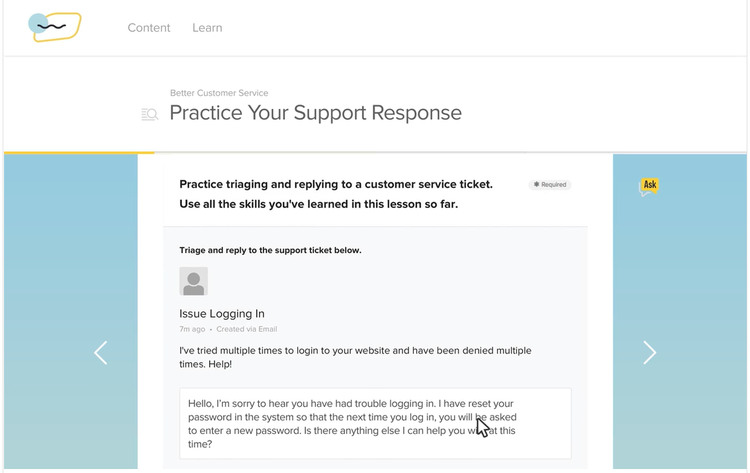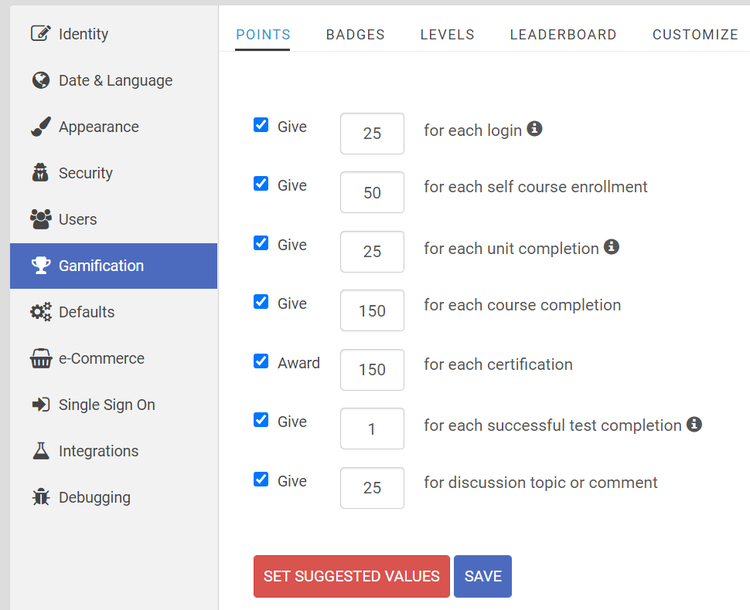How to Use Inquiry-Based Learning in Your Business
Google is famous for encouraging employees to spend 20% of their time exploring ideas they're excited about. The idea turned out to be more useful in theory than practice, but it lives on with good reason.
The best work comes not so much from dedication or discipline but from passionate engagement with a problem. And while there's plenty of work to be done each week that isn't all that inspiring or exciting -- it is work, after all -- employees need time at work to explore problems that excite and intrigue them.
Inquiry-based learning (IBL) exploits that fundamental drive by engaging learners in active questioning and problem solving. It is sometimes called "flipping the classroom" because it puts students in charge of their own learning. Here's how you can bring some of that excitement to your employee training programs.
Overview: What is inquiry-based learning?
Inquiry-based learning is a teaching method that invites students to learn by posing questions and solving problems. It’s a form of constructive or discovery learning in which learners actively discover knowledge as opposed to passively receiving it.
Inquiry-based instruction emphasizes independent learning, whether in small groups or individually. Like digital storytelling and microlearning, it’s an approach that can be applied across a variety of corporate challenges and course modules.
What does this look like in a training session? Here's an example of a traditional vs. inquiry-based approach.
Traditional: Today we're going to study the six principles of an effective sales pitch. Get out your notebook while I fire up the old slide deck.
Inquiry-based: Today I want you to think about the best and worst sales pitches you've ever given or seen. What succeeded about the first one? What failed in the second? When you're done, we'll go around the room and compare notes to figure out the elements of an effective sales pitch.
Which session would excite you more? Which would you learn more from? Why?
That's the heart of inquiry-based learning. Here's how to put it to work for your business.
Types of inquiry-based learning
There are four types of inquiry-based learning, each with different applications and benefits.
1. Confirmation inquiry
In a confirmation inquiry, sometimes called a controlled inquiry, the instructor poses a problem and provides tools and procedures for solving it. The solution is already known. The student’s job is to use the tools to arrive at the correct solution. Think of a high school science lab. Learning is active, but the methods and outcomes are given.
Work example: Employees work through a new software program in small groups with the goal of creating a team calendar and chat channel. At the end of their work session, they share tips they discovered along the way.
2. Structured inquiry
A structured inquiry poses a question and provides a process for investigating it. Students do their own research and analysis to arrive at a solution to the problem. Questions are more open-ended, and there may be more than one correct solution.
Work example: Your customer service ratings are declining. You share the data with employees and ask them to analyze it in small groups, identify the core problems, and come up with suggestions for improvement. The groups present their results, which are later developed into a set of formal recommendations.

Assigning real-world practice problems in a learning management system (LMS) such as Lessonly is an excellent way to incorporate IBL. Image source: Author
3. Guided inquiry
In a guided inquiry, the instructor poses a question without a known answer. Students decide independently how to solve the problem, including what data to collect and how to collect it. They investigate and present their conclusions.
Work example: You're growing fast and want to make sure your teams are cohesive. You’re not sure what will work best for your employees, so you decide to let them name their team-building adventure. You order pizza, gather everyone (with their laptops) for a brainstorming session, and start whiteboarding. Two hours later, you have a retreat planned.
4. Free inquiry
Free inquiry is where learners explore questions and problems that interest them and solve them independently. In a free inquiry, the learner bears the responsibility for framing the question, creating the scope and parameter of the inquiry, finding the answers, and presenting the results.
Work example: You give an annual game-changer award for an idea with the greatest potential to change your company for the better. Employees (or teams) work on ideas independently throughout the year and submit their ideas in the fall. The top idea earns a cash bonus and is considered for possible implementation.
5 benefits of inquiry-based learning
Inquiry-based lessons can enhance learning in many ways. Here are a few major benefits to consider.
1. Engagement
Everyone likes to solve problems. In fact, the urge is so strong that we have to learn to put a lid on it if we want to be a good listener. Solving problems is naturally engaging, much more so than passively receiving knowledge.
2. Staying power
Active learning boosts retention. It's much easier to remember how we solved a problem than to recall a set of facts someone shared based on their experiences.

WorkRamp LMS provides challenges that let employees practice skills and gather feedback. Image source: Author
3. Innovation
Inquiry-based learning is a two-way exchange. Learners don't just receive knowledge; they develop and share it as part of the group learning experience. This opens the door to a broader range of solutions and more innovative results.
4. Ownership
Because learners are constructing knowledge through experience, they feel a sense of pride and ownership in the results. This creates more satisfying learning experiences.

You can reward employees for coming up with creative ideas through gamification elements such as badges and certificates. Image source: Author
5. Buy-in
That sense of ownership translates into buy-in for whatever company initiatives result from training. When employees help design a solution, they're invested in its success.
6 ways to incorporate inquiry-based learning into your workplace training
Here are some ideas for bringing inquiry-based teaching into your company.
1. Bring all hands to all-hands
If your employee meetings tend to be top-down affairs, try setting aside some of that time for group problem solving. It can be a simple exercise in which you present a recent problem your leadership is mulling over and break into small groups for a brief brainstorming session. Have a notetaker in each group compile suggestions to be shared on the spot or in writing.
2. Flip the workroom
You can flip any workroom by stepping back and asking yourself, "I know what I want them to know. But can I step back and give them a chance to figure it out on their own?"
For example, you have a team meeting to go over last month's results. You can simply share the results and point out where you're excelling and where you're falling short. Or you can share the results, step back, and ask, "So, how are we doing? What opportunities do you see?"
3. Re-orient orientation
Orientation is another company ritual that tends to have more give than take. Try incorporating opportunities for your new hires to bring their experiences to the table.
For example, say you have a common customer service request you want them to handle in a certain way. Instead of listing out your best practices, pose a sample request and have them work out a response. Then walk through their responses and guide them to your best practices.
4. Let the games begin
One of the best ways to make inquiry-based learning work for your company is to introduce a little competition. Whether it's a quarterly safety award, an annual innovation bonus, or a system of badges and certifications, rewarding employees for solving key challenges can pay off through great ideas and happier employees.
5. Tap your teams
Inquiry-based learning can be implemented more broadly by taking employee questions and suggestions seriously. This is easier said than done because it means tamping down our own urge to solve everything for everyone.
It takes a conscious effort, but you can start small. Hand over a key challenge to an employee committee and see what they come up with. Give teams ownership over perennial issues such as safety and employee culture. Give employees room and resources to pursue their ideas independently.
6. Use learning management software
A learning management system (LMS) makes it easier to deliver transformative learning experiences across your company. Many systems provide features that engage employees in active learning.
For example, Lessonly and WorkRamp allow employees to practice real-world skills, such as responding to customer emails and delivering sales pitches, while eFront provides outstanding gamification features.
Great ideas start with great questions
Great ideas come from curiosity, passion, and the freedom to think critically about things that matter to you. By applying inquiry-based learning principles to your employee training, you can foster a spirit of curiosity and constructive problem solving at all levels in your company.
Alert: our top-rated cash back card now has 0% intro APR until 2025
This credit card is not just good – it’s so exceptional that our experts use it personally. It features a lengthy 0% intro APR period, a cash back rate of up to 5%, and all somehow for no annual fee! Click here to read our full review for free and apply in just 2 minutes.
Our Research Expert
We're firm believers in the Golden Rule, which is why editorial opinions are ours alone and have not been previously reviewed, approved, or endorsed by included advertisers. The Ascent does not cover all offers on the market. Editorial content from The Ascent is separate from The Motley Fool editorial content and is created by a different analyst team.
Related Articles
View All Articles